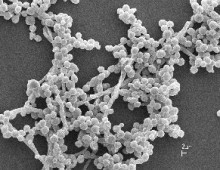Xylose-fermenting yeast project in Ethanol Producer
Using Mother Nature as their teacher, researchers at the U.S. DOE’s Great Lakes Bioenergy Research Center, along with the DOE’s Joint Genome Institute, have sequenced the genomes of two types of yeasts found in bark beetles and then compared and contrasted the results with other yeasts’ genome sequences to determine which can best convert the… [Read More]
